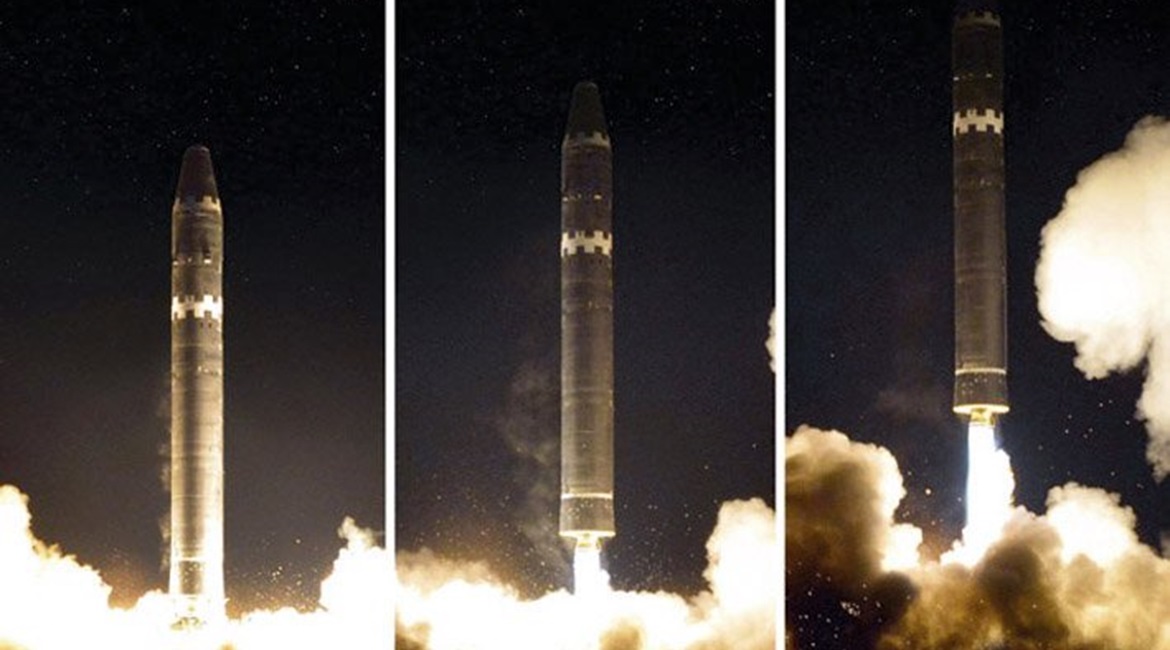
United States Forces Korea (USFK) has confirmed North Korean claims that the Northeast Asian country’s Hwaseong-15 (also spelled Hwasong-15) road-mobile, intercontinental ballistic missile (ICBM) can strike targets anywhere in the US mainland.

USFK has confirmed that North Korea's Hwaseong-15 ICBM (seen here being test-launched on 29 November 2017) is “capable of striking any part” of the US mainland. (Via KCNA)
The weapon, which was test-fired by North Korea on 29 November 2017, has an estimated range of 8,000 miles (12,875 km), meaning that it is “capable of striking any part” of the US mainland, said USFK in its ‘2019 Strategic Digest’, which it published jointly with United Nations Command and Combined Forces Command.
For comparison, in its 2018 Defense White Paper the Japan Ministry of Defense (MoD) had put the weapon’s range at “more than 10,000 km”.
On the day the ICBM was test-launched Pyongyang’s Korean Central News Agency (KCNA) stated that the Hwaseong-15 had reached an altitude of 4,475 km and flown a linear distance of 950 km before coming down, making it the ballistic missile with the potential for the longest range so far tested by Pyongyang.
However, no information has yet emerged about the size of the payload the Hwaseong-15 was carrying when test-fired, which would ultimately affect its range.
The KCNA has described the Hwaseong-15 as an ICBM “tipped with super-large heavy warhead”, offering “greater advantages in its tactical and technological specifications and technical characteristics than [the] Hwaseong-14 [ICBM]”, which during a 28 July 2017 test-launch reached a reported altitude of 3,724.9 km and flew a linear distance of 998 km before coming down.
Looking to read the full article?
Gain unlimited access to Janes news and more...




